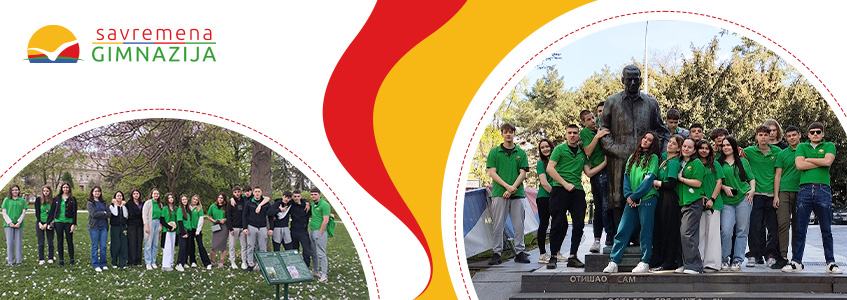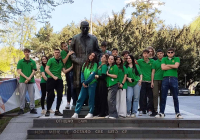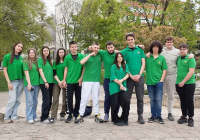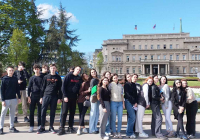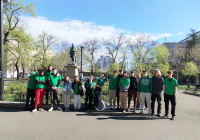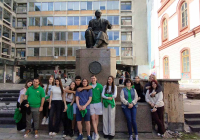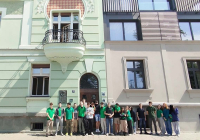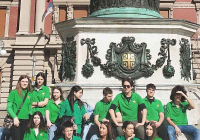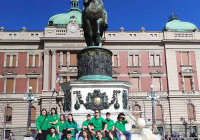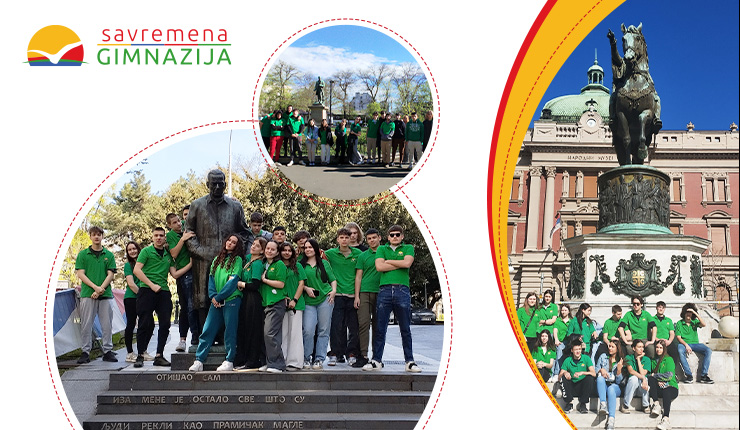
Second Grade Students from Savremena Gimnazija had a unique opportunity to experience Latin language learning and the history of Romans in a completely new way with their Latin teacher, Natalija Stanković, through ambient education at authentic archaeological sites in Belgrade. This educational adventure took them to various parts of the city where Romans resided from the second to the 4th century AD, providing students with the opportunity to firsthand experience and learn about Roman history and culture.
Commencement of the Adventure in Pionirski Park
The visit began in Pionirski Park, where students learned more about Roman burials and how Romans used streets like Cardo and Via Militaris. They also had the chance to see remains found during the excavation of the garage in Pionirski Park.
Republic Square Reveals Its Roman Past
PhotThe lesson continued with a tour of Republic Square, the former Roman necropolis, where students learned about the significance of this area in Roman times. In the area of Studentski Trg and the plateau in front of the Faculty of Philosophy, students explored the remains of Roman baths and discussed numerous archaeological finds that remained hidden beneath modern Belgrade buildings.
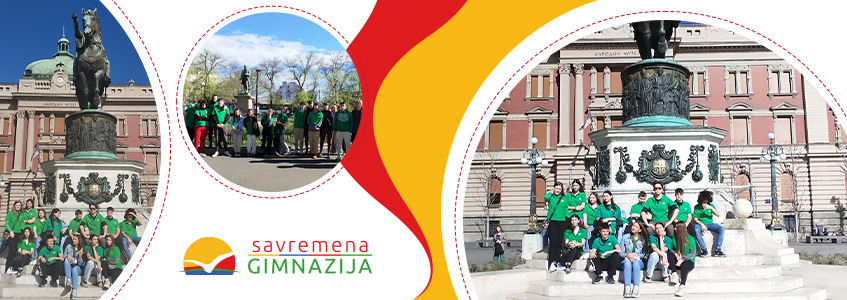
In front of the National Bank of Serbia, they learned that they were on the site of a Roman square, where altars dedicated to Jupiter, the supreme deity of the Roman pantheon, were discovered.
The tour concluded at Kosančićev Venac, where the most beautiful villa in Singidunum once stood, and at Rajićeva Shopping Center, where students saw remnants of a Roman road leading to the entrance of the camp.
Education Beyond the Classroom
Ambient education, which takes learning outside traditional classrooms, has shown its significance through interactive and experiential learning, where students not only acquire knowledge but also directly experience the subject of study. This approach enables better understanding and longer-lasting retention of material, connecting theoretical knowledge with the real world and historical context.

This learning method demonstrates that Latin is still alive in the traces left by the Romans and provides students with the opportunity to understand the cultural and historical context that is inseparable from the language itself, in addition to grammar and vocabulary.

